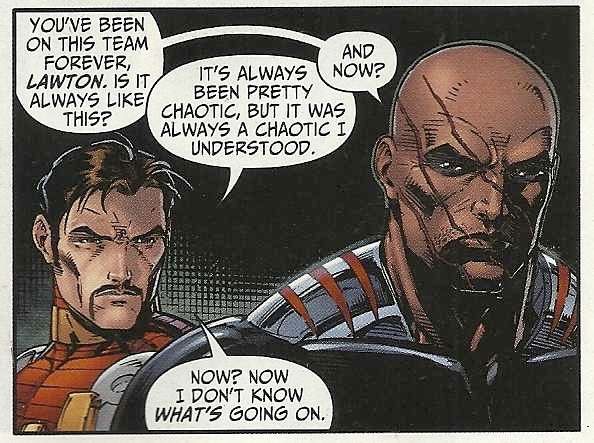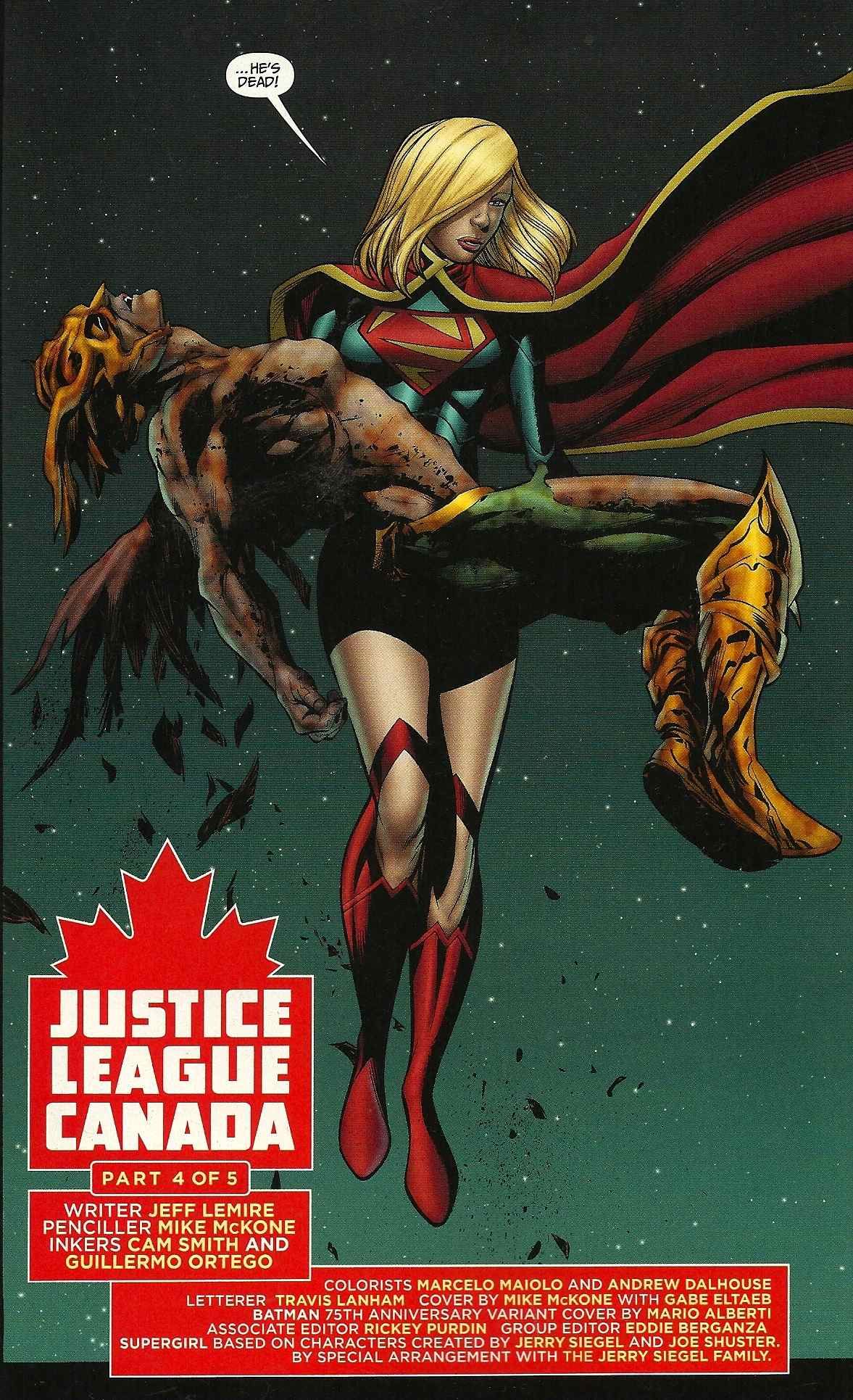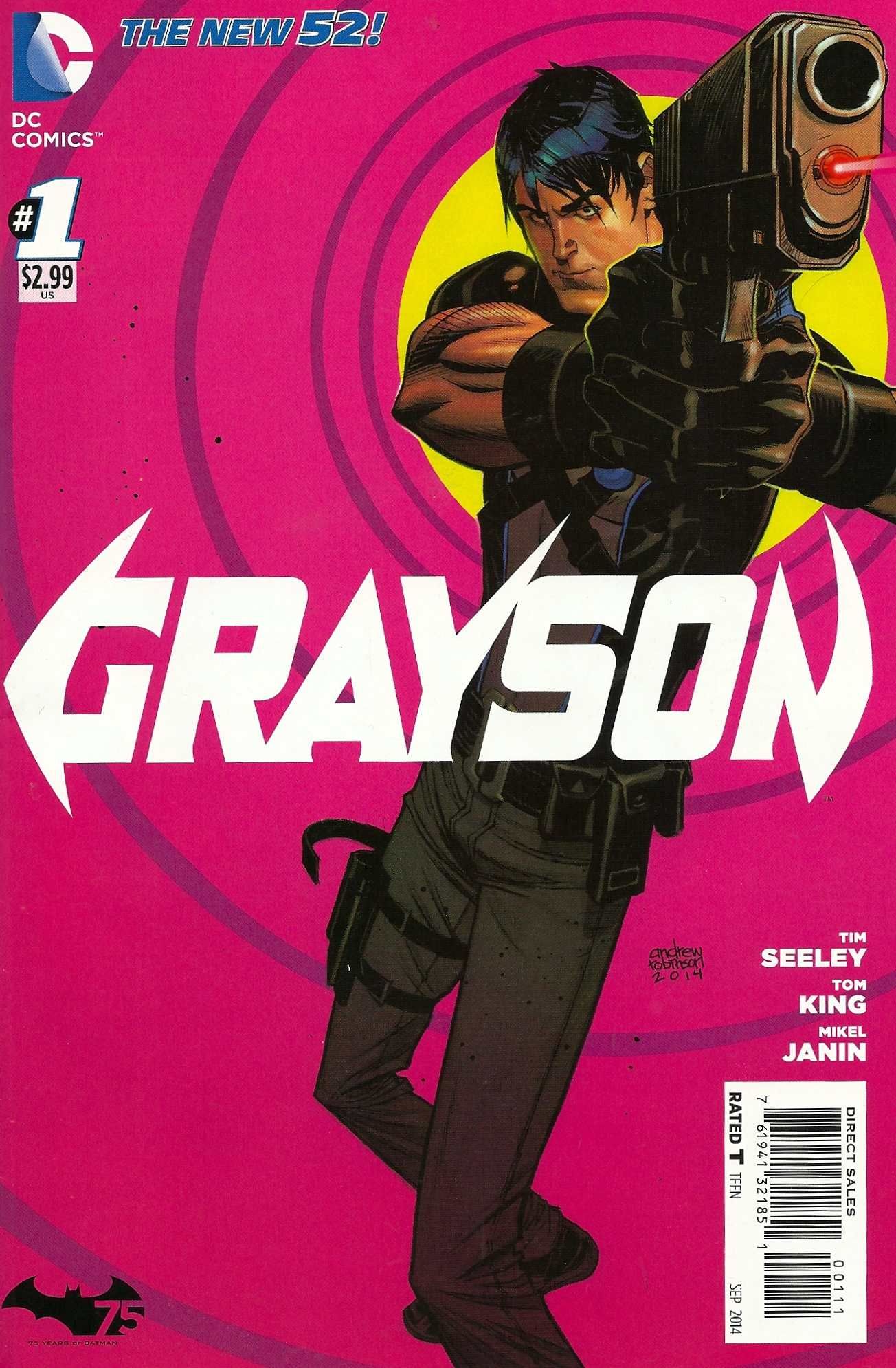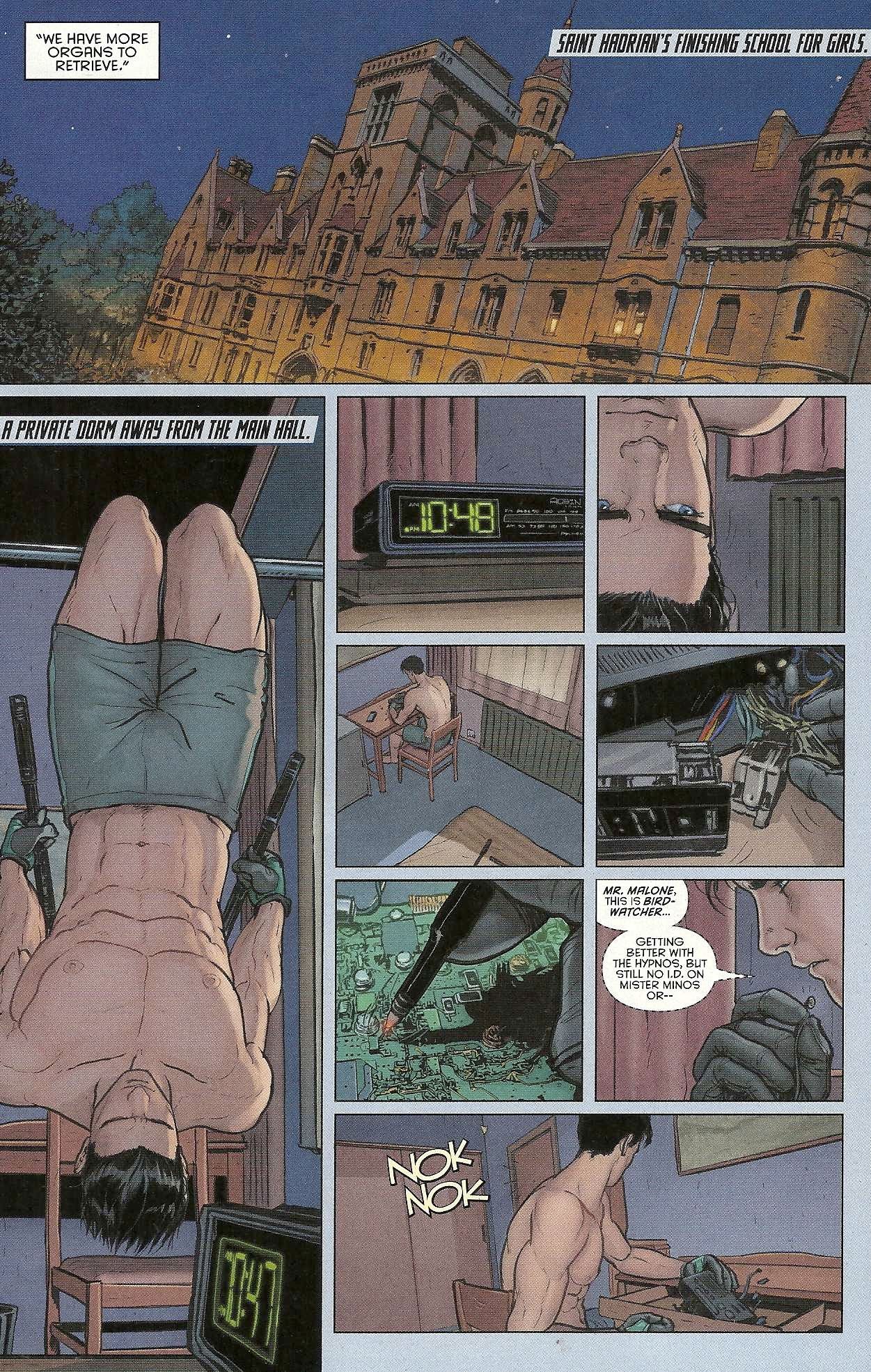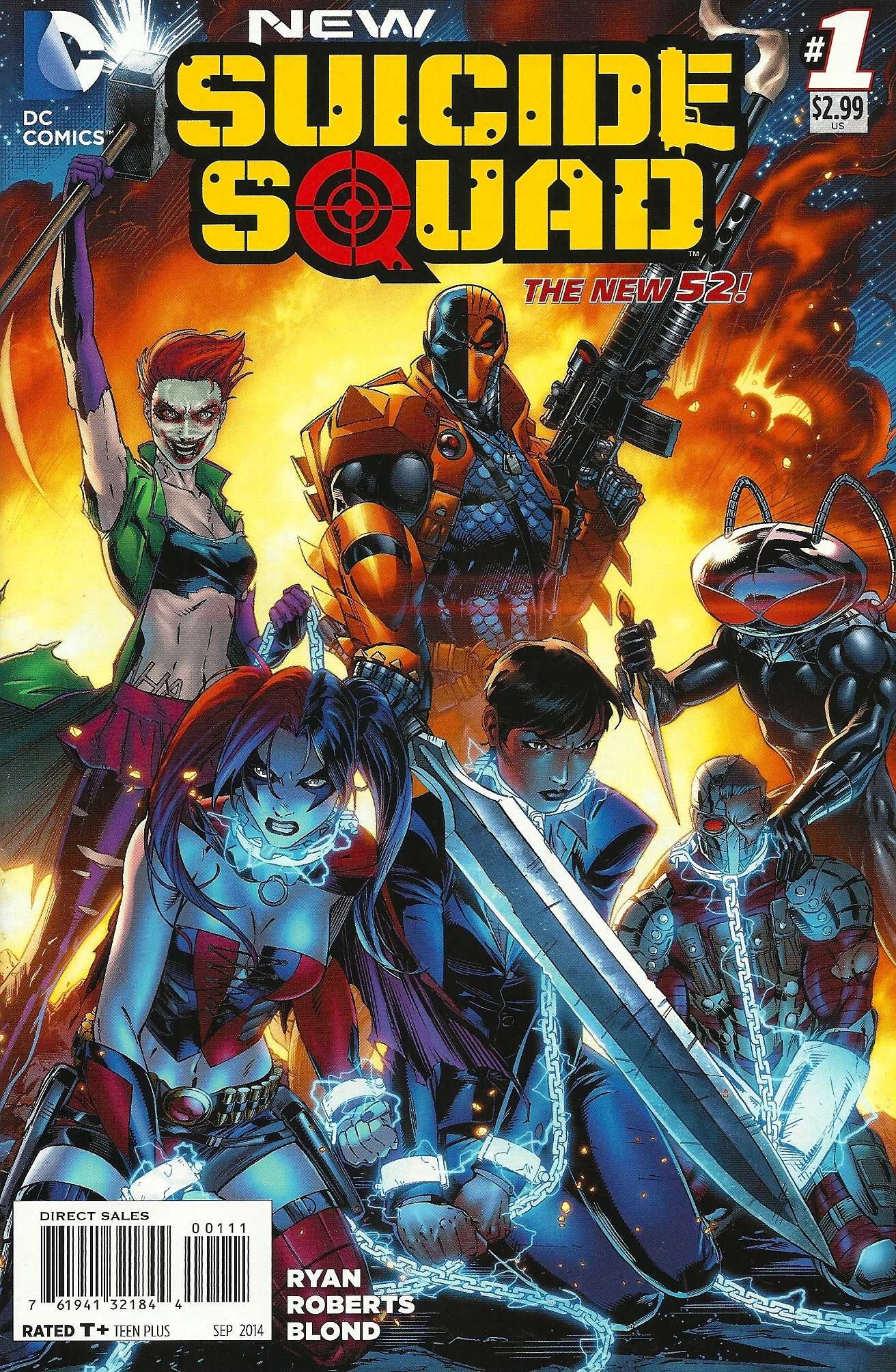I've found the new Justice League United to be a rather surreal reading experience, until this point, for all sorts of reasons: It's hard to believe DC launched this series to replace the much-ballyhooed — 52 variant covers! — Geoff Johns/David Finch Justice League of America after a mere 14 issues; it's weird to see DC quietly reversing its "holding the line at $2.99" policy with a Marvel-ous price point of 22 pages for $3.99; it launched with a zero issue that was actually a must-read first issue so that the story chapters and the issue numbers are now forever out of sequence; it featured Hawkman having an arm lopped up only to grow it back the next issue because Nth Metal; it featured an attempt to give the old grim-and-gritty treatment to Ultra the Multi-Alien; and so on.
However, the single most surreal aspect of the book may be one that's suffused so much of the New 52, but is particularly present in the team books that rely on shared history (despite the fact that there isn't really any shared history). In Justice League United, writer Jeff Lemire and penciler Mike McKone have assembled a rag-tag group of superheroes — Animal Man, Green Arrow, Star Girl, Hawkman and Supergirl — led by Martian Manhunter, whose place in the new DCU and relationships with the other Justice Leaguers is still ambiguous.
It's also introduced us to the New 52 versions of Adam Strange and Alanna, which are so incredibly different from their previous incarnations that it seems like a core part of the characters has been twisted. Rather than an alien princess from a sci-fi paradise world, Alanna is Strange's human grad student/lover on Earth, and the pair are zeta-beamed together to Rann ... along with this embryonic Justice League.
As surreal as reading this series has been, though, this issue was the very first one at which I laughed out loud. That happened on the very last page, where the title of the story is revealed as "Justice League Canada Part 4 of 5" in a red maple leaf-shaped box, despite that the story has only briefly had anything to do with Canada and, in fact, much of the action has taken place in outer space.
And, better yet, the page is a splash of a single image, Supergirl sadly holding the mildly burned corpse of Hawkman and declaring, "... he's dead!" During the previous pages, it seemed as if Hawkman were heroically sacrificing himself to save millions as he flew off with an overheating power core, shouting "Make sure you bury me on Thanagar!"
I suppose there might be an iota of suspense in this cliffhanger, save for one thing: In last week's issue of New 52: Futures End, co-written by Lemire, Hawkman came back from the dead after floating lifelessly in the vacuum of space for some time, explaining that the Nth Metal in his blood "does amazing things ... I don't even know if I can die."
Well, as of last week, we figured he could not, so this ending lacked a bit of suspense.
DC's biggest release of the week is no doubt is the debut of Grayson, the new series spinning out of the events of Forever Evil and, somewhat surprisingly, Grant Morrison's run on Batman Incorporated (both the pre- and post-Flashpoint volumes). As DC's strong PR push has likely already informed would-be readers, the premise of the series — co-plotted by Tim Seeley and Tom King, written by Seeley and drawn by Mikel Janin — is that the outed Dick Grayson faked his own death (with only Batman, Lex Luthor, Catwoman, Owlman and maybe a few other Justice Leaguers knowing he's alive) and, to capitalize on the unique circumstances, Batman has assigned him to infiltrate the super-spy organization Spyral.
As originally conceived by Morrison in Batman Inc., Spyral was a S.H.I.E.L.D.-like United Nations organization that became corrupted by its villainous head, and was primarily devoted to killing off "troublesome" superhumans. As it's presented here, the organization is putting up a much more benevolent front for Grayson, and, if not devoted completely to the destruction of various superheroes, it is primarily concerned with unmasking them.
The final panels here is a of a bank of computer monitors, with the organization's current head, Mister Minos, saying, "Power cannot be masked" while regarding a headshot of Batman, identifying his secret identity as "Bruce Wayne," with a 89 percent level of certainty (after Nightwing was unmasked as Bruce Wayne's ward Dick Grayson in the pages of Forever Evil, I would have assumed it something closer to 99.99 percent).
Before that, Seeley, King and Janin present us with a fairly meaty series of scenes of Grayson at work in his new job, fighting a dude atop a train, intercepting an asset before a Russian agent can get to him, and making a death-defying escape. If being a secret agent isn't something a reader thinks would come naturally to Grayson, the creative team does a fine job of showing how his Nightwing skills come into play: There's a scene of complicated acrobatics that recalls the multi-image panels of Nightwing flipping around Bludhaven rooftops of the sort artist Scott McDaniel popularized; there's a scene of Dick working out in his boxers that recalls his role as popular DCU beefcake; and a brief scene of flirting between he and his fellow agent Helena Bertinelli, recalling his relationship with a previous version of that character (and his propensity for romantic entanglements with co-workers).
What's perhaps most notable is that the book manages to function quite well as a #1 all on its own, as it doesn't require readers to be familiar with the events of the final issue of Nightwing (in which Batman sends Grayson on this mission) and Forever Evil and Batman Inc. There's a handy four-panel recap of Dick's New 52 history, but, for the most part, it's a fully functional standalone book.
Whether one likes it or not — and there's some rather fine artwork, the best I've seen from Janin — there's no denying the title has a distinct hook that differentiates it from the rest of the Bat-books, and a story arc that's genuinely suspenseful (at the very least, one has to wonder how DC will put Grayson back in a Nightwing costume and restore his secret identity once this series' premise has played out).
Finally, this week DC has another series debut, which also deals with intelligence agencies, the Russian government and Batman-related characters: New Suicide Squad, which is basically just the just-canceled Suicide Squad relaunched with a new #1, new creative team and slightly altered title, a la a Marvel book (I'm kinda surprised they didn't just go ahead and call it All-New Suicide Squad).
This first issue of the new Suicide Squad series is many times better than the first issue of the previous new Suicide Squad series: If you've forgotten, that issue featured a half-dozen supervillains being brutally tortured for 22 pages until one of them breaks. And that was it. That was the whole issue.
Here the premise is that easy-to-loathe, cocky government hotshot Victor Sage has assumed some level of control over Amanda Waller's "Task Force X," and assembled a new team. Well, new-ish. He's keeping Harley Quinn and Deadshot, but adding another scantily clad, Joker-derived character (The Joker's Daughter) and another armored assassin whose costume covers one eye (Deathstroke). Also, Black Manta's there.
Sage's idea is to motivate Harley and Deadshot by having people so much like them on the team they'll feel compelled to compete, but Waller's unsure of it, as Joker's Daughter and Deathstroke aren't prisoners with bombs in their necks, but are both being paid (sort of; while Deathstroke gets money, Joker's Daughter is being promised she'll get The Joker).
Sean Ryan's script is a pretty generic introduction to the characters, but given how erratic and repugnant much of the previous series turned out to be, generic is a good thing. Artist Jeremy Roberts' work is also a head and shoulders above some of the art in the previous volume but, again, is pretty unremarkable.
Sage sends the Squad into Russia, where their task is to destroy a particular floor of a particular government building—which leads to plenty of maybe not intentionally funny panels, of things like Joker's Daughter hitting someone so hard they explode into black ink and beating up a keyboard — and things seem to go pretty well for them up until the very last page, in which it looks like some New 52 versions of the Red Rockets show up.
And I think Destro from G.I. Joe is somehow involved ...?
But whatever else one might say about the New Suicide Squad, it at least got one thing right that the previous volume screwed up particularly badly:
Floyd Lawton has a mustache again. But will he keep it, or shave it off? You'll have to keep reading New Suicide Squad to find out!

